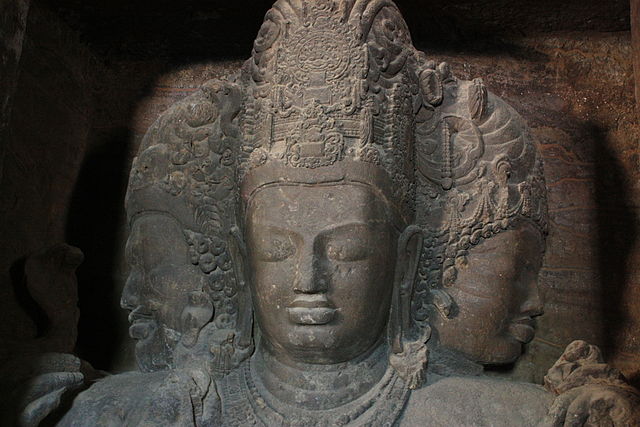
photo: Ricardo Martins
Sadashiva
Cave temple of Shiva
Elephanta Island

photo: Ricardo Martins |
SadashivaCave temple of Shiva
|
The statue of Eternal Shiva (Sadashiva) at Elephanta is rich in multiple associations and meanings, an attempt to render the Godhead in visible form. The great height (7m) and darkness of the statue reinforce Shiva's mysterious awesomeness, which must have been even more impressive during worship, when the statue would have been illuminated by the flickering light of numerous small oil lamps. There are hints from early travelers that the cave may also have been plastered and painted, although no traces of this remain today.
Shiva's majestic central face (Tatpurusha-Mahadeva) is calm and detached, the eyes closed in meditation. His photo-right-facing head, Vamadeva-Uma, is peaceful and feminine, with out-thrust lower lip (like a flower?), contemplating a lotus. His photo-left-facing head, Aghora-Bhairava, is fierce and masculine, scrutinizing the head of a cobra. The three faces taken together express the contradictory nature of the Divine, which gathers up and transcends all opposites, a characteristic expression of India's additive culture. The sculpture, in other words, is a Trimurti, because it expresses three different forms of the godhead.
This form of Shiva has a fourth head (Sadyojata-Nandin), which is here present conceptually but not physically. The fourth head is seen in other sculptures, for example, a smaller Sadashiva that was recovered from the Elephanta site and is now in the Prince of Wales Museum in Bombay.

|

|

|